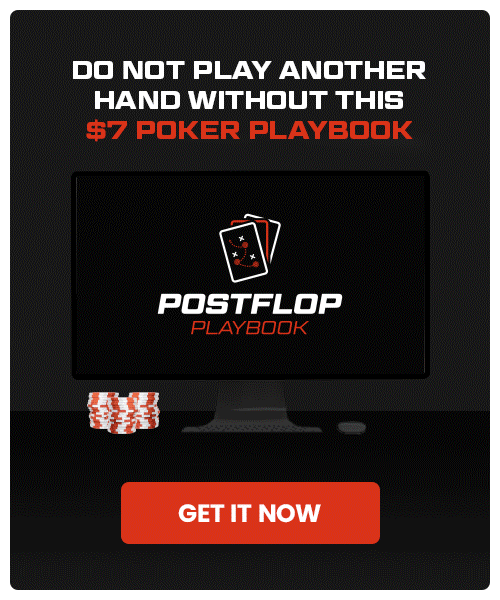How to Play Ace-Three Suited in Cash Games
Suited Aces pack quite a punch in No Limit Hold’em, especially if you know how to play them.
This article covers how to play one of the smallest suited Aces, Ace-Three suited, both before and after the flop.
Get ready to sharpen your skills and uncover the strategies needed to maximize your profit (and minimize your losses) with this hand.
Let’s dive in!
The End Boss System – Coming October 9th
Doug and his longtime heads-up coach Fabian Adler have been working on a new course called The End Boss System for the last few months.
The End Boss System is literally guaranteed to be a game-changer for you. The course focuses on heads-up strategy, but the concepts and mechanics you learn will help you succeed in any No Limit Hold’em game type.
Join The End Boss System waiting list for free!
As we approach the October 9th launch of The End Boss System, Doug is releasing in-depth hand analyses videos every Friday, starting with this hand he played against Daniel Negreanu in a $100k buy-in Heads-Up Duel (basically a deep stacked sit and go).
How to Play Ace-Three Suited Preflop
Let’s delve into playing Ace-Three suited in every common preflop situation. This advice is for cash games with no antes and 100 big blind stacks.
But first, these are the positions that will be referenced throughout this article:
Unopened Pots
Ace-Three suited, often underestimated, is a surprisingly strong hand. In fact, it comfortably ranks within the top 20% of starting hands in No Limit Hold’em.
When the action folds to you, you can profitably open-raise Ace-Three suited from every position.
Against a Raise
Facing a raise, your response with Ace-Three suited should depend on both your position and your opponent’s position at the table.
When you are seated in Middle Position, the Cutoff, or the Small Blind, you can always fold against a raise. 3-betting isn’t necessarily bad, but you have to be careful when playing in tough games or if you are unsure of how to play postflop.
When you are on the Button, you can play Ace-Three suited against a Cutoff raise (either by cold-calling or 3-betting). By default, it’s a bit too loose to play it against earlier positions. However, if the player who raised is someone you want to target and/or if the players in the blinds are unlikely to squeeze, you can justify putting in some chips.
From the Big Blind, never shy away from defending with Ace-Three suited. You can even mix in the occasional 3-bet. Ace-Three suited serves as an excellent semi-bluffing hand, adding a dash of balance to your 3-betting ranges while applying pressure on your opponent’s medium hands. Whatever you do, just don’t fold.
Note: Do not play another hand without this $7 Postflop Playbook! With such a low price tag, Doug Polk’s Postflop Playbook is a no-brainer buy if you want to nail down your fundamentals and build a bigger bankroll. Level-up your poker skills now!
Against a 3-Bet
While Ace-Three suited is a versatile hand, you should only continue against a 3-bet under specific circumstances. The key determinant is the 3-bettor’s range.
For instance, when you raise from the Hijack or an earlier position and face a 3-bet, folding Ace-Three suited is advisable. It tends to fare poorly against these 3-betting ranges, assuming your opponent follows a sound preflop strategy. Moreover, alternative hands make better candidates for 4-bet bluffs in such scenarios (A5-suited, some suited broadways, etc.).
But if you raised from the Cutoff, Button, or Small Blind, you can always call with Ace-Three suited against a 3-bet (assuming your opponent isn’t super tight). The wider 3-betting ranges of opponents in these positions make Ace-Three suited a profitable call, as it can hold its own in a variety of postflop scenarios.
Against a 4-Bet
Although you won’t normally find yourself in this situation (since you don’t 3-bet Ace-Three suited that often), you should opt to fold when faced with a 4-bet.
Ace-Three suited will simply not be a strong enough hand, and it can even be dominated by an opponent’s 4-bet bluffs (like Ace-Five suited).
A Quick Word on Multiway Preflop Situations
Suited Aces like Ace-Three suited are some of the best multiway hands in the game. As a result, you can sometimes hop into a multiway pot with Ace-Three suited, even if I advised above that you fold it in that same situation.
Check out this article to learn more: Which Starting Hands Win the Most in Multiway Pots?
3 Tips for Playing Ace-Three Suited After the Flop
Tip #1: Check back on Ace-high flops (when you’re the in position preflop raiser)
Example: You raise with from the Cutoff and the Big Blind calls. The flop is .
While it’s true that you’ve hit a solid made hand, there isn’t much reason to bet on the flop.
There are no overcards that can come, so you know you’ll still have top pair on the turn. It is also too weak to bet all three streets for value.
This hand will fit neatly in your check back range. You can always bet on the turn/river if your opponent checks to you multiple times. Plus, you give your opponent a chance to bluff, and then you can look to bluff-catch*.
*Unless your opponent decides to fire an overbet and follow through with another one — then you must think about it more deeply.
Tip #2: Always fast-play your trips or two pairs
When you hit a monster hand on a flop like or , start piling money in that pot!
If you raised preflop, c-bet on the flop. If you called a raise preflop, look to put in a raise against a bet.
Trips and two pair are bread-and-butter value-betting hands. If you miss bets with these types of hands on a regular basis, you’re leaving a lot of money on the table.
Tip #3: Call at least one bet when you hit a pair (after defending from the Big Blind heads-up)
Example: You defend your Big Blind with versus a raise. The flop comes , you check, and your opponent bets.
I love flopping a pair after defending my Big Blind, even if it’s bottom pair! You should almost always be willing to call at least one bet.
Final Thoughts
With these strategies, you’re well-equipped to outperform the vast majority of poker players. It only took five minutes to grasp these concepts, but consistency is key. Implement these tactics consistently, and watch your profits soar when playing Ace-Three suited (A3s).
That wraps up this article, folks. I trust you found it enlightening and insightful. Feel free to share your feedback and ask any questions you might have in the comment section down below.
Until next time, good luck, grinders!
When you get The Postflop Playbook, you will learn how to make quick and profitable decisions that translate to more (and bigger) winning poker sessions. Learn more now!

